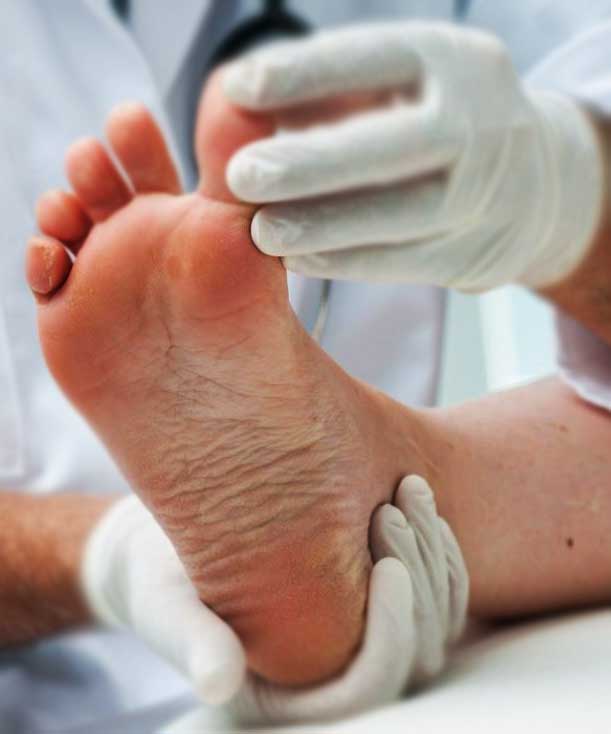|
Are you worried about a parent or older relative or someone who is medically vulnerable who is cocooning due to Covid-19? Do they have foot problems and are you unsure what you should do next? Our clinic will be open from Monday, 18th May 2020 but here are some foot tips to help in the meantime.
What could you look out for and what could you do:
Though everyone over 70 has been asked to cocoon, movement and sunshine is also important to overall good health and it’s important that they stay mobile. That could mean simply walking up and down their driveway, their footpath to the line and back or just sitting outside in the sun and fresh air – don’t forget the sunscreen, you can still get burnt in Ireland in April. Commons symptoms of Covid-19 include a fever, a cough or sore throat and a shortness of breath. If you suspect anyone has Covid-19 or any other medical concerns, contact their doctor in the first instance and have them self-isolate. If its outside doctor’s hours, contact the emergency services (Gardai / Ambulance) or your local hospital. To stop the spread of Coronavirus wash hands with soap and water for at least 20 seconds or use an alcohol based hand gel. Cough or sneeze into the crook of your arm or into a tissue and bin it straight away and use antibacterial spray / disinfectant to clean household services. To help you and your family to stay healthy the HSE is advising everyone to stay home, practice social distancing (2 metres/6 feet apart) and clean their hands regularly. Stay safe.
0 Comments
Chilblains are the painful inflammation of small blood vessels in your skin that occur in response to repeated exposure to cold but not freezing air. Chilblains can cause itching, red patches, swelling and blistering on your hands and feet.
Risk factors include: Clothing that is tight or exposes skin to the cold. Wearing tight-fitting clothing and shoes in cold, damp weather may make you more susceptible to chilblains. And skin that is exposed to cold, damp conditions is more likely to develop chilblains. Your sex and weight. Women are more likely to get chilblains than are children and males. Also, people who weigh about 20 percent less than is expected for their height have an increased risk of chilblains. Environment and season. Chilblains are less likely in colder and drier areas because the living conditions and clothing used in these areas are more protective against cold. Your risk of chilblains is higher if you live in an area with damp and cold, but not freezing, temperatures. They are more common from November to April. Having poor circulation. People with poor circulation tend to be more sensitive to changes in temperature, making them more susceptible to chilblains. Having been diagnosed with Raynaud's disease. People with Raynaud's disease are more susceptible to chilblains. Either condition can result in sores, but Raynaud's causes different types of colour changes on the skin. Chilblains most often develop on the toes. Common symptoms include: · a burning sensation on the skin · red, blue or white swollen patches · intense itching · dry skin, leading to splits and cracks · possible secondary infection · ulceration, in severe cases. To help prevent chilblains: · Avoid or limit your exposure to cold. · Dress in layers of loose clothing and wear mittens and warm, water-resistant footwear. · Cover all exposed skin as completely as possible when going outside in cold weather. · Keep your hands, feet and face dry and warm. · Keep your home and workplace comfortably warm. · Don't smoke. If your skin is exposed to cold, it's helpful to rewarm it gradually because sudden rewarming of cold skin may worsen chilblains. Treatments Treatments for chilblains, which consist mainly of topical remedies and medications, are usually effective and the patient makes a full recovery within a couple of weeks. If left untreated though, there is a risk of complications, such as skin ulcers, cracked or broken skin, and infections. The patient can treat chilblains that have not developed into and infection or skin ulcer with OTC medications purchased at a Chemist. Corticosteroid cream - this may help with symptoms of inflammation and itching. If the skin is cracked the individual should see a doctor. Home care The following can ease symptoms: · rewarm skin gently - do not massage, rub, or apply direct heat · keep skin dry and warm · apply lotion to reduce itching · clean skin with an antiseptic to reduce the risk of infection · do not scratch Severe, ulcerating or recurring chilblains need professional attention. A qualified Foot Health Practitioner can offer advice on prevention. If you suffer from severe and recurring chilblains, your doctor may prescribe a preventive drug. If you have a pre‑existing condition, such as diabetes, you must see your doctor to check the circulation in the affected area without delay. Looking after your feet
by Andrea Keenan of The Foot Care Centre, Clonmel Taken from the South Tipp Today newspaper 22nd February 2018 People always remember to pamper their feet in preparation for the warm summer months because they are more exposed. The following is advice for giving your feet the proper care to ensure good healthy feet all year round. Ensuring your footwear fits comfortably and is not too tight is paramount when choosing a shoe at any time of the year. To check that you are wearing a shoe with a toe box wide enough for your feet, you should be able to wiggle your toes freely inside your shoe. Sandals, shoes or boots that restrict the movement of your feet and squash your toes, create pressure on the nail and this in turn can cause your nail to grow into the skin and develop into an ingrown toenail. Socks made from natural fibres, such as cotton or wool are best for your feet. Avoid synthetic fabrics which can cause your feet to sweat and smell. Natural fibre socks help keep your feet warm and dry and prevent heat loss. This is especially important for people who suffer from Diabetes, damaged nerves or poor circulation (the “high-risk foot”) because they are more likely to experience problems with their feet. It is important to keep your feet clean and dry and your toenails neatly manicured to avoid common foot issues such as corns, calluses, fungal infections and ingrown toenails. The weather can dry out your feet and cause cracks, especially in your heels. If not properly treated broken skin can leave you vulnerable to infection, such as Athlete’s Foot (Tinea Pedis). Be sure to alternate the wearing of your footwear, if at all possible. When your feet are kept in a warm, moist environment for long periods of time – such as steel-capped boots, wellington boots and winter shoes and boots - the added warmth from closed-in footwear and warm socks may cause your feet to sweat, increasing the risk of infection and providing an ideal environment for nail fungus to grow and thrive. Keep footwear clean and dry and allow them to air out between wears. Looking after your feet will keep them looking nice and healthy so you will be ready when Summer finally arrives. It is very important to inspect your feet regularly. If you are experiencing any kind of foot pain or notice anything out of the ordinary, don’t hesitate to contact me. I am here to help you have healthy, attractive feet. If there is any item you would like to discuss further, please come and visit me. If you suffer from congestive heart failure and diabetes, these two conditions can possibly cause a buildup of fluid in the feet, making the skin more fragile and prone to infection. Good routine foot care can assist in this area.
As the autumnal weather sets in, it’s time for you to take a step in the right direction so you don’t get cold feet. People always remember to pamper their feet in the warm summer months because they are more exposed to the world. However, it’s just as important to take care of your feet during the winter. Below are some tips from me for giving your feet the proper care this winter.
When your feet are kept in a warm, moist environment for long periods of time – like winter boots – it provides an ideal environment for toenail fungus to grow and thrive. I recommend:
Giving your feet the proper upkeep will keep them looking nice so you’ll be ready when summer comes back around.
Buying Winter Boots Invest in a pair of boots that fit properly and are easy to get on and off whilst wearing thick winter socks. Whether you're slogging through snow or contending with dampness, chill and muddy conditions, it's important to take care of your feet all winter long. You'll want them to be healthy and ready for action when spring finally arrives. Now you’ve put away your sandals, you will want a pair of boots that are both stylish and warm. Here are some tips to help you decide what boots are best for you. Walking Boots: Walking boots/shoes are designed for people who walk for prolonged periods, over differing terrains. They offer good support, grip and are usually made of leather or other durable and waterproof material. Ugg Boots: These boots are a popular fashion accessory and are usually lined with sheepskin. They offer warmth and comfort but are not designed for our winters. They offer little or no support and are not waterproof. Snow Boots: These are heavier than fashion boots but are waterproof and have a good grip. They are designed with warmth in mind but can be fashionable too. |
andrea
|
Location |
|



 RSS Feed
RSS Feed


